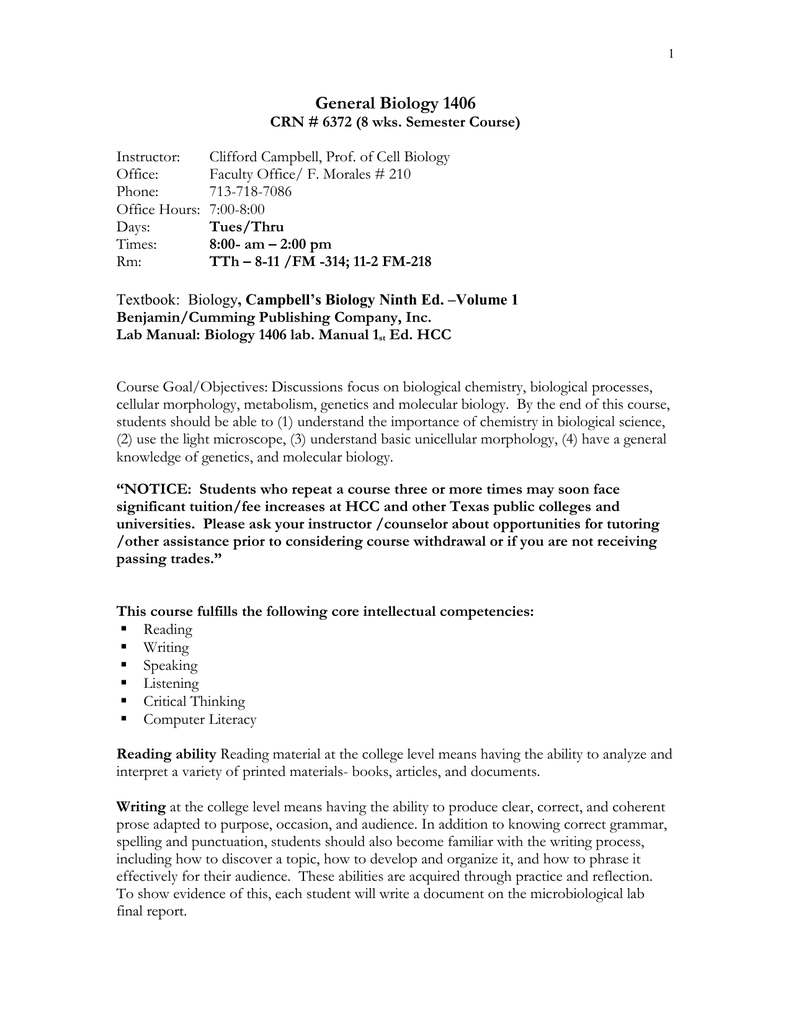Campbell Biology 9th Lab Manual
Description With its distinctive investigative approach to learning, this best-selling laboratory manual encourages students to participate in the process of science and develop creative and critical reasoning skills. Students are invited to pose hypotheses, make predictions, conduct open-ended experiments, collect data, and apply the results to new problems. The Sixth Edition includes a new bioinformatics lab and new media references for students to explore relevant animations and exercises on the Campbell/Reece BIOLOGY textbook website. Select tables from the lab manual are provided in Excel ® format on the website, allowing students to record data directly on their computer, process data using statistical tests, create graphs, and be prepared to communicate their results in class discussions or reports. An investigative, open-ended, and integrated approach teaches students how to think and work as a scientist.
Questions for Review and Applying Your Knowledge sections demonstrate the relevance of biological investigation by teaching students to apply concepts to real-world situations. An Annotated Instructor’s Edition combines students’ labs with instructors’ resource materials, including marginal instructors’ notes, answers to all text questions, and a comprehensive Teaching Plan.

1-16 of 31 results for 'campbell biology lab manual' Investigating Biology Laboratory Manual (9th Edition) Jan 14. Principles of Biology Lab Manual.
A detailed preparation guide, available in print or as a PDF on the website, includes materials checklists, ordering information, and preparation scheduling. The manual includes assignments to help students improve written and verbal communication skills.
References for each lab topic are updated, including web references. Safety icons alert students to potential hazards. Many text figures, diagrams, and color photos in the color insert are updated and improved.
The Scientific writing appendix incorporates critical assessment of web reference sources and proper citation of web resources. The Symbiosis custom lab building kit allows instructors to design their own lab manual by selecting exercises from a digital archive, adding their own exercises and instructions, and rearranging the order of the labs to fit course needs.
Campbell Biology 9th Edition Study Guide
A new sequence of lab topics more closely follows the Campbell/Reece BIOLOGY, Eighth Edition chapter sequence. An entirely new Bioinformatics lab gives students hands-on practice with the techniques and evidence from biology, molecular genetics, computer science and evolutionary biology. A new media icon refers students to videos, animations, activities, and investigations found on the Campbell/Reece BIOLOGY,Eighth Edition companion website. New Questions for Review and Applying Your Knowledge questions have been added for every lab topic. Investigative Extensions or a Case Study accompany every lab topic.
Select tables are provided in Excel format on the Campbell/Reece BIOLOGY, Eighth Edition companion website at www.campbellbiology.com. A preparation guide is available in print and PDF on the companion website at www.campbellbiology.com. Support has been added for scientific design and communication.
A medically based Case Study has been added to the Vertebrate Anatomy labs. Table of Contents LABS 1. Scientific Investigation 2. Microscopes and Cells 3. Diffusion and Osmosis 4.
Cellular Respiration and Fermentation 6. Photosynthesis 7. Mitosis and Meiosis 8. Mendelian Genetics I: Fast Plants 9. Mendelian Genetics II: Drosophila 10.
Molecular Biology 11. Population Genetics I: The Hardy-Weinberg Theorem 12. Population Genetics II: Determining Genetic Variation 13. Bacteriology 14. Protists and Fungi 15. Plant Diversity I: Nonvascular Plants (Bryophytes) and Seedless Vascular Plants 16.
Plant Diversity II: Seed Plants 17. Bioinformatics 18.
Animal Diversity I: Porifera, Cnidaria, Platyhelminthes, Annelida, Mollusca 19. Animal Diversity II: Nematoda, Arthropoda, Echinodermata, Chordata 20. Plant Anatomy 21. Plant Growth 22. Vertebrate Anatomy I: The Skin and Digestive System 23. Vertebrate Anatomy II: The Circulatory and Respiratory Systems 24.
Campbell Biology 9th Edition Test Bank
Vertebrate Anatomy III: The Excretory, Reproductive, and Nervous Systems 25. Animal Development 26.
Animal Behavior 27. Ecology I: Terrestrial Ecology 28.
Ecology II: Computer Simulations of a Pond Ecosystem.